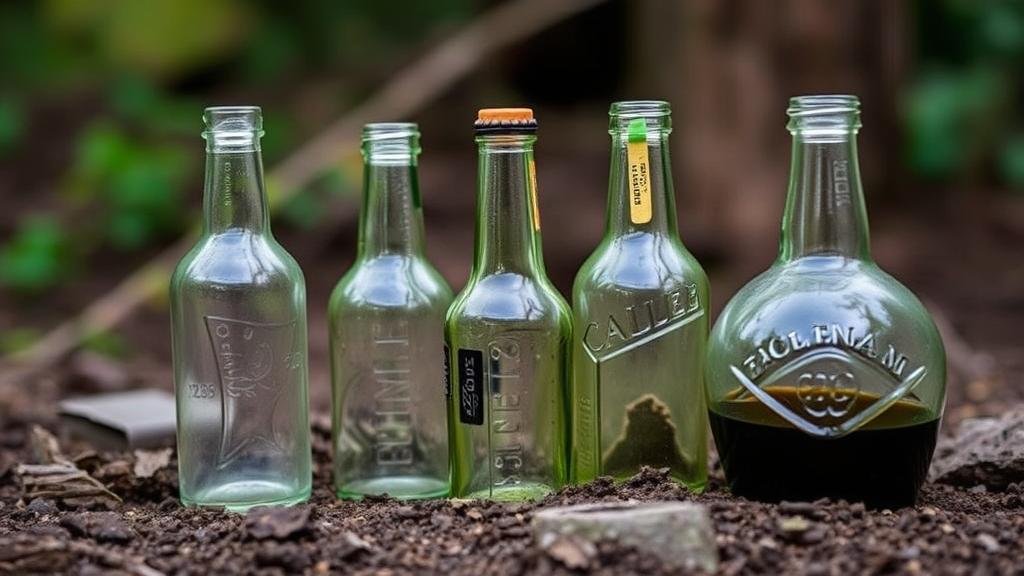Unearthing Collectible Bottles in Forest Groves Near Historic Trails
Unearthing Collectible Bottles in Forest Groves Near Historic Trails
The pursuit of collectible bottles in forest groves adjacent to historic trails is both a curious hobby and a fascinating intersection of archaeology, history, and environmental stewardship. This article delves into the intricate relationship between these bottles and their historical significance, exploring how enthusiasts can effectively search for and appreciate these artifacts while being mindful of the legal and environmental implications of their discovery.
The Historical Context of Bottle Collecting
During the late 19th and early 20th centuries, bottle manufacturing underwent significant changes due to advancements in technology and materials. Collectible bottles from this era often hold immense historical significance, offering insights into commercial practices, consumer habits, and daily life. bottles may reveal branding from businesses long forgotten, such as soda pop manufacturers and local breweries, providing a tangible connection to the past.
For example, bottles from the late 1800s, featuring embossed logos, can command prices ranging from a few dollars to several thousand depending on their rarity and condition. Notable brands such as Coca-Cola and Pepsi emerged from this transformative period and their early bottles are prized by collectors today.
Identifying Ideal Locations for Bottle Digging
Forest groves near historic trails present unique opportunities for bottle enthusiasts, primarily due to the historical foot traffic these paths attracted. Through years of use, discarded items–particularly glass bottles–accumulate in these green spaces. Factors contributing to successful searches include:
- Proximity to Old Transportation Routes: Trails that once supported horse-drawn carriages, trains, or foot traffic are prime locations for uncovering artifacts.
- Vegetation Patterns: Bottle hunters often observe berry patches, old tree stumps, and areas where soil has been moved, as these locations can reveal historical trash pits.
- Land Use History: Researching the area’s past can provide insight into old establishments such as inns, taverns, or farms potentially leading to bottle finds.
Techniques for Successful Bottle Excavation
When embarking on a treasure hunt in the forest, employing strategic techniques can enhance the chances of uncovering valuable bottles. Key methods include:
- Surface Collection: Many bottles can be found just lying on the ground, especially post-rain when soil erosion may reveal hidden items.
- Digging: Enhanced excavation methods, including using hand tools like trowels, allow for deeper digging, but care should be taken to minimize environmental impact.
- Utilizing Technology: Devices such as metal detectors (though primarily for metal, they can provide a sense of buried treasures) and smartphone GPS can help track locations of previous finds.
Legal and Environmental Considerations
Before embarking on a bottle digging venture, it is crucial to understand the legal ramifications and environmental responsibilities involved. Many forested areas, especially those near historic trails, may be protected sites where digging is prohibited. Always:
- Check Local Laws: Research local regulations regarding digging and collecting; some areas require permits or have specific rules about what can be collected.
- Practice Responsible Collecting: Limit the disturbance to the environment by filling in any holes dug and minimizing trampling on delicate vegetation.
- Report Significant Finds: If an artifact of substantial historical value is discovered, it may be prudent to report it to local historical societies or museums.
Maintaining Your Collection
Once collectible bottles are successfully unearthed, maintaining their condition is essential to preserving their historical value. Recommendations for care include:
- Cleaning: Use gentle soap and water; avoid abrasives that may scratch glass.
- Displaying: Store bottles upright in a stable environment, away from direct sunlight to prevent fading and heat-related damage.
Conclusion
The journey of unearthing collectible bottles in forest groves by historic trails is not only a means of connecting with the past, but it is also an avenue for learning and appreciation of heritage. Enthusiasts who approach this pursuit with respect for the environment and local laws can uncover extraordinary stories encapsulated within these glass artifacts. As this hobby continues to grow, it also fosters community engagement and a deeper understanding of local history, paving the way for future generations to appreciate the treasures unearthed from our collective past.



